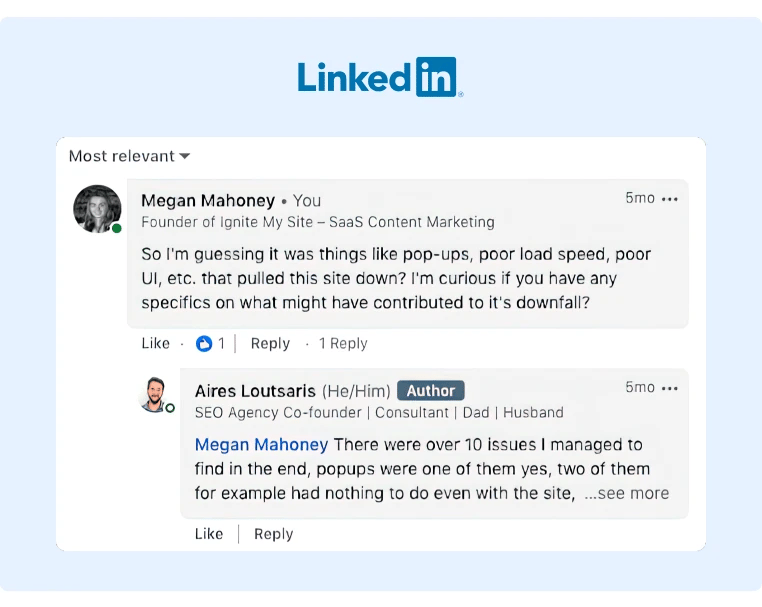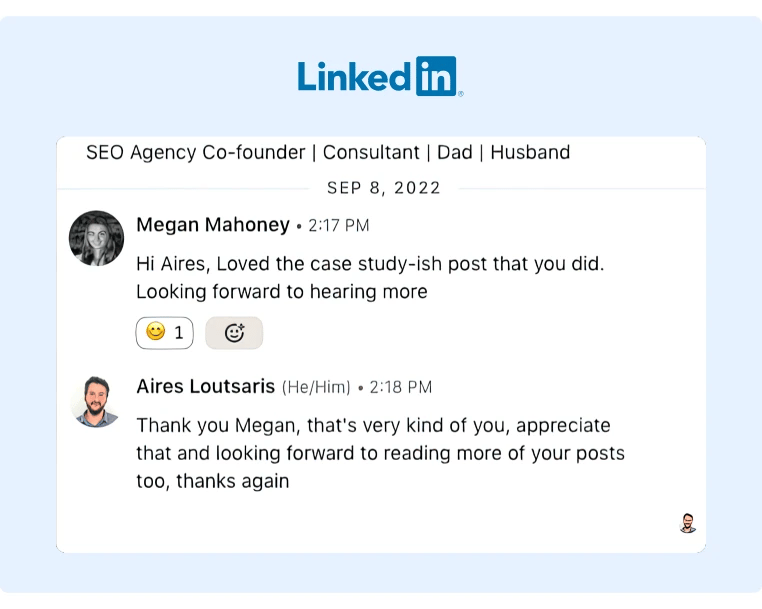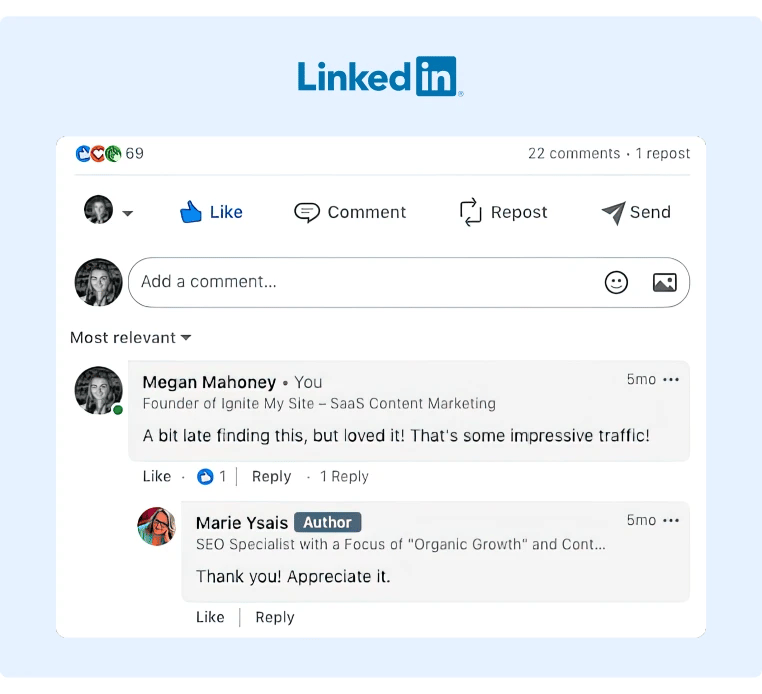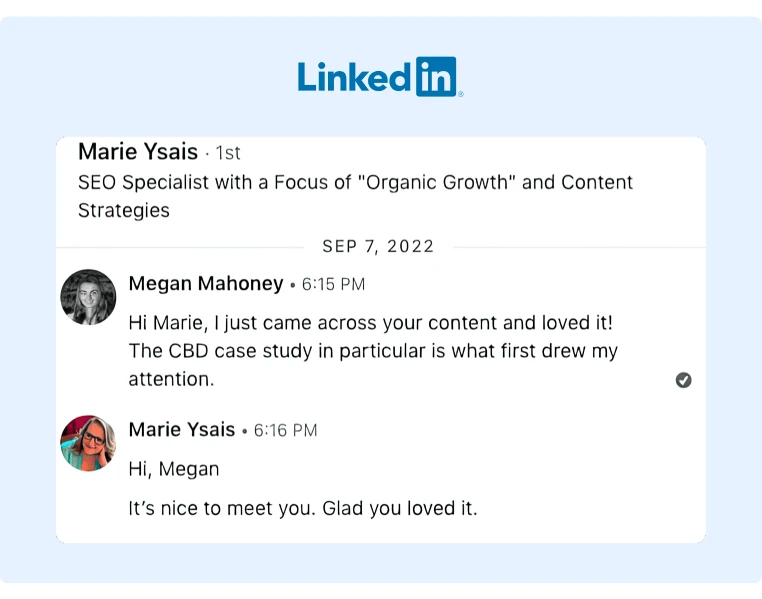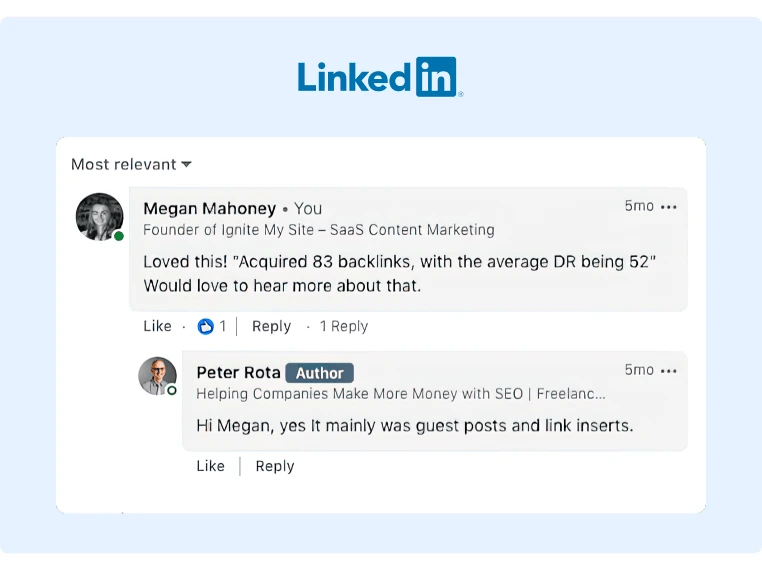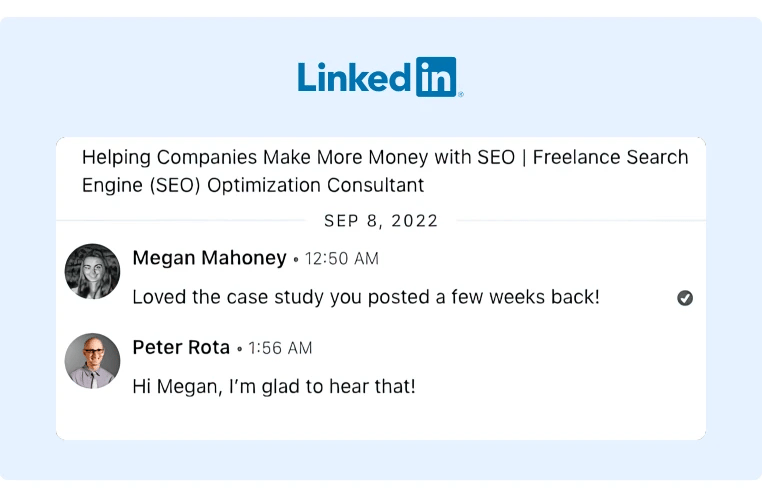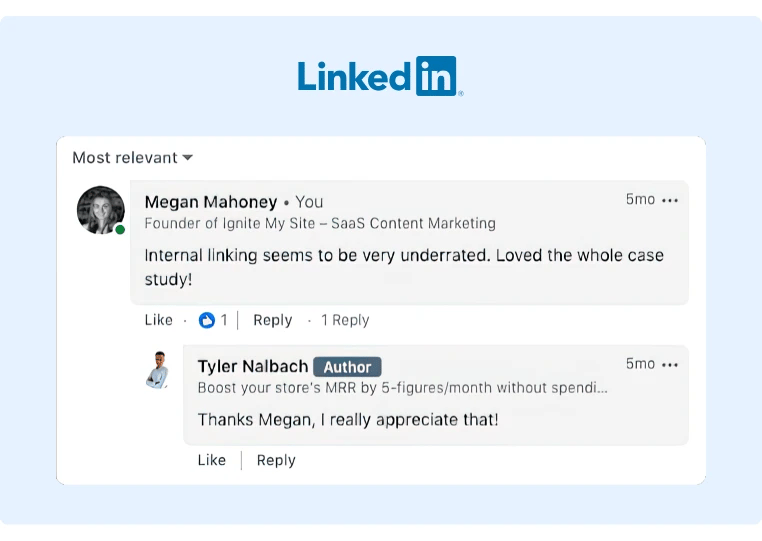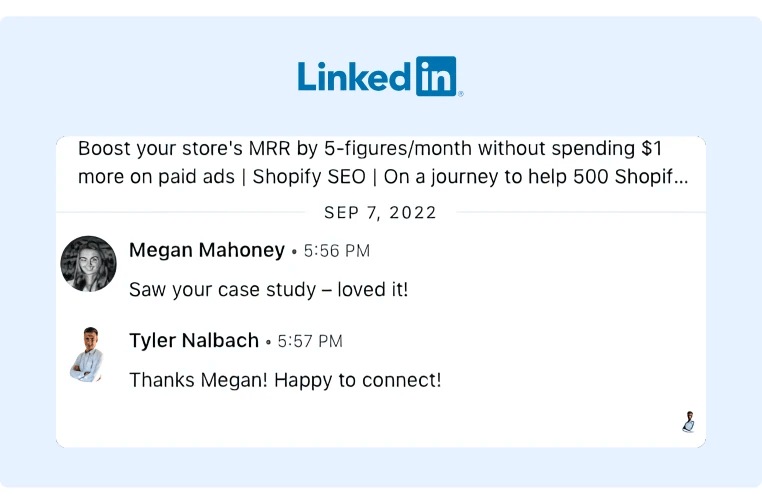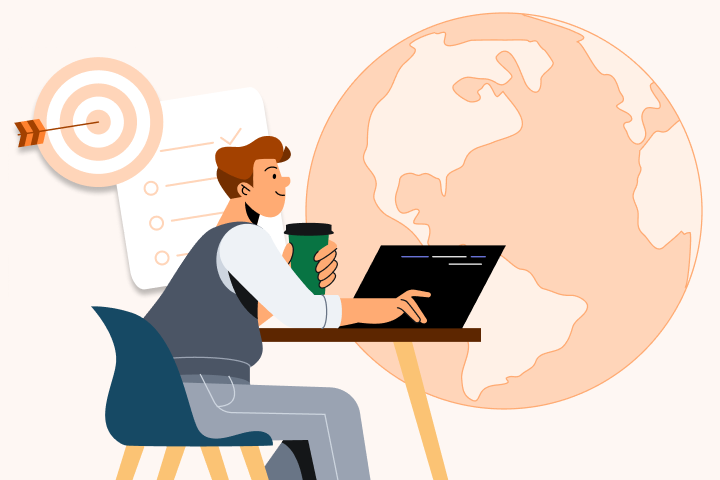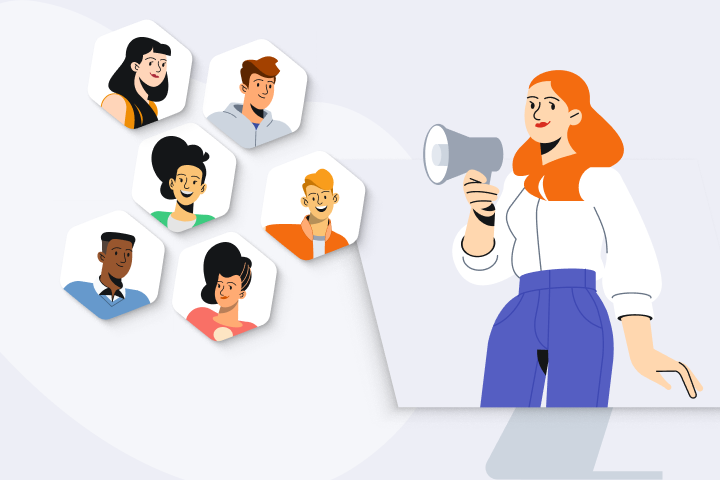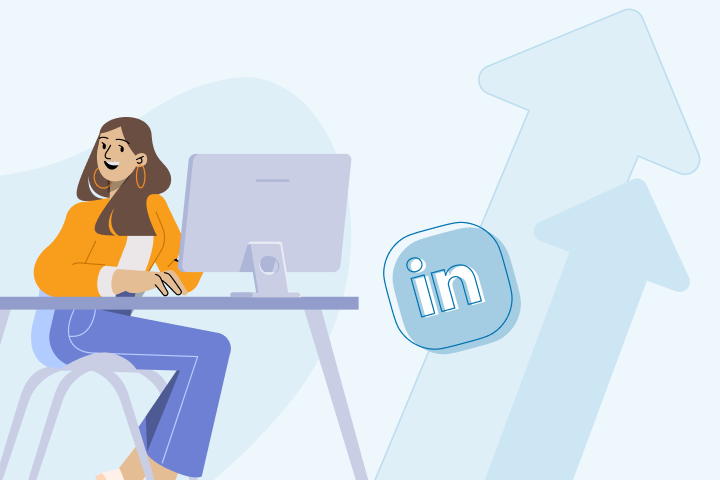Best practice advice for crafting a killer LinkedIn conversation starter usually focuses on optimization tips like:
However, you've probably received plenty of these messages, and few are compelling.
Even if you accept the connection request, you probably don't remember the person the next day.
Here's a step-by-step strategy to help you craft an excellent LinkedIn conversation starter that makes the receiver drop what they're doing to respond.
How to Craft a LinkedIn Conversation Starter That the Receiver Loves
Step 1: Shift From Optimizing for Best Practices to Receiver Delight
Improving response rates isn't about optimizing the wording of your message – it's about optimizing the offer of your message.
For example, I'm not excited when I see this generic outreach message about a degree program for entrepreneurs, and no amount of personalization or other best practice optimizations will make me excited:
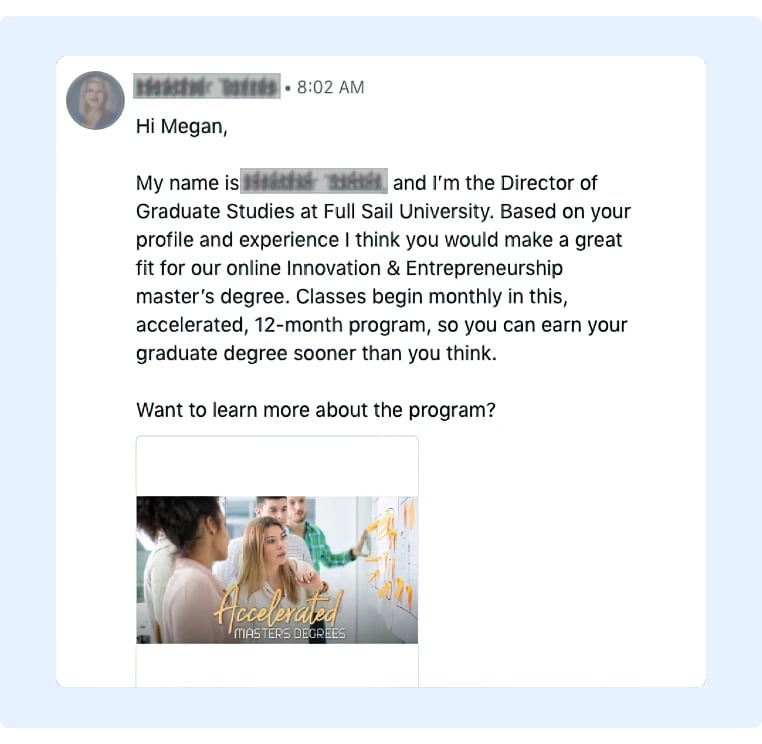
As you go through each step of this strategy, you'll see that it focuses on building authentic relationships (even before sending a connection request) rather than minor copywriting optimization tweaks.
Step 2: Pinpoint Exactly Who You Want to Talk To
LinkedIn outreach campaigns are most successful when you manually reach out to prospects and craft individual messages for each one rather than using a generic outreach template.
Unfortunately, this means you won't be able to reach out to nearly as many people, so it's important to pinpoint the very best prospects.
Side note: LinkedIn limits the number of new connection requests and InMail messages you can send daily. If you use the spray-and-pray approach, you could be banned from the platform altogether.
So, how do you find your ideal customers?
LinkedIn users can search for prospects by using basic filters like connections or titles, though it limits the number of LinkedIn profiles you can view.
If you plan to double down on LinkedIn outreach, consider using LinkedIn Sales Navigator.
It allows you to view unlimited profiles and offers more advanced filters. You can also create and save lead lists to streamline your outreach process.
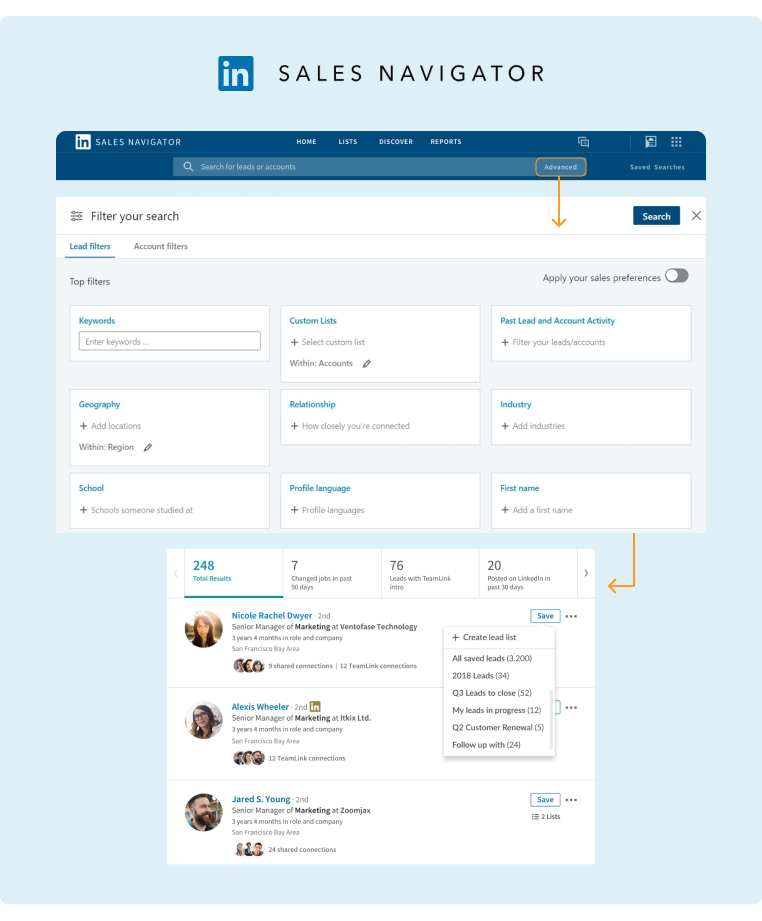
Step 3: Engage With Their Content
After creating a list of promising prospects, most people send a generic LinkedIn connection request.
However, the best way to increase your connection request acceptance rate and build a genuine relationship with the person is to first engage with their content.
First, go to each person's profile, look through their most recent posts, and then leave a thoughtful comment on one of their posts.
This immediately provides value to the receiver (everyone appreciates engagement on their posts), and it requires very minimal effort on your part.
The key is to leave a truly thoughtful comment. If you just hit "like" or drop an emoji, it's easy for the other person to overlook it.
One pro tip is to ask a question. If you're asking for their opinion, it shows you clearly respect them, making you stand out from everyone else that's just trying to look like an expert.
Here's an example:
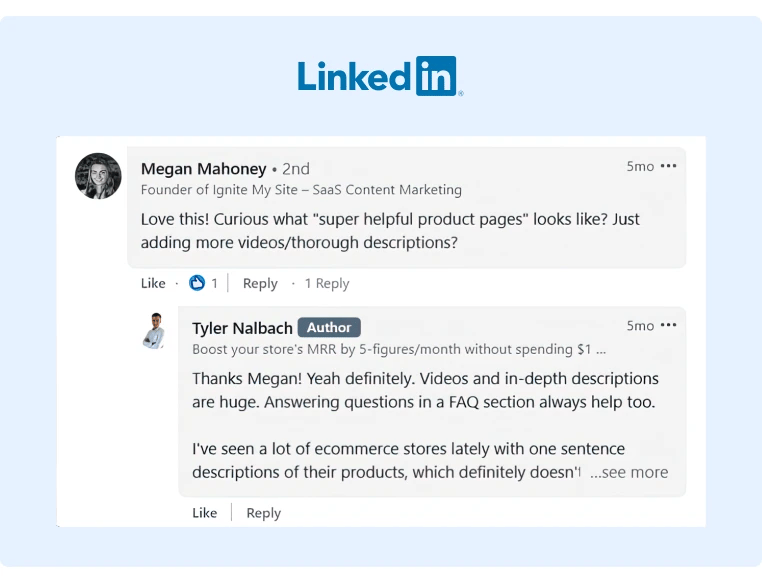
Step 4: Send a Strategic Connection Request
Now that they've seen your comment on their LinkedIn post, they're much more likely to accept your connection request.
Be sure to reference the post in your connection request, and you can add something like, "Looking forward to more content from you!"
Notice that this message will probably delight the receiver, so you don't need to carefully optimize your message.
You'll also have a very high connection acceptance rate, which means you'll win back more LinkedIn connection request credits and can ultimately scale your outreach faster.
Here's an example of how I used this strategy:
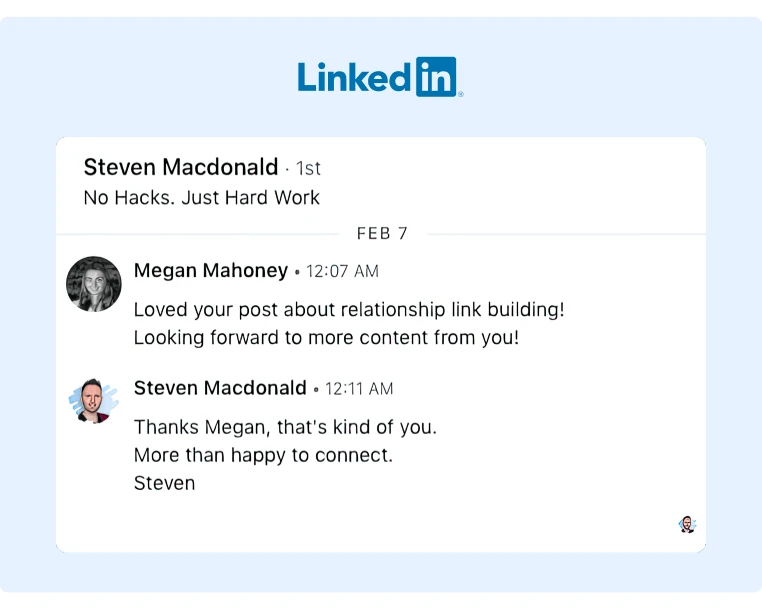
Even though this post is all about conversation starters, the best hack is to avoid using templated messages. Instead, lay the groundwork by engaging with their content and then send a warm connection request.
Step 5: Continue To Engage
Now that you've made a great first impression and opened the door to building the relationship, continue to engage with their content.
While you can continue to build the relationship over a direct message (DM), it's more time-consuming for receivers to respond to DMs, and it's more valuable for them if you engage with their content.
Continue leaving thoughtful comments for another few weeks.
If you're worried this process will take too long, consider systematizing your engagement workflow.
For example, set aside two hours on Tuesdays and Thursdays to review your engaged connections list and comment on their most recent post.
While it may seem like a lot of work, it has a potentially huge ROI because most people won't put in this level of effort to build relationships and acquire new clients.
Step 6: Create a Soft Pitch
After engaging with their content for a few weeks, consider sending another DM.
This time, you can offer a soft pitch for your product or service (if it's relevant to that person).
Here's a great way to create a soft pitch:
"Hi (name), I loved (a point they made in a recent post you commented on).
Could you use some extra help with (service you offer)? If so, I'd be happy to help. Keep up the great content – I'm really enjoying it!"
Notice that this pitch is very soft and doesn't feel forced. Sometimes, the person might even introduce you to someone in their professional network.
After sending this pitch, continue to engage with their content, though perhaps less often (if they don't respond positively to your pitch). For example, you could engage with their content once per month rather than weekly.
Even if they aren't in a position to hire you now, there's a good chance they'll remember you and organically reach out in the future when they need help. You can also follow up with them in a few months to see how they're doing and if it's a better time to do a partnership.
Bonus: Consistently Create Your Own Personal Brand
Hopefully, this strategy has drilled home the lesson that the best way to start conversations on LinkedIn is to organically engage with people.
The hardest aspect of organic relationship building is that it doesn't scale.
The best solution to this problem is to create an organic content marketing strategy for LinkedIn to build your personal brand and attract the right people to you.
Unlike manual outreach, content does produce compounding results so that you don't have to reach out to people continuously.
Even though you won't see an ROI at the start, it is a highly effective long-term strategy to bring your ideal target audience to you.
If you're not sure where to start with LinkedIn content, we created a guide to creating a LinkedIn content strategy.
To show you how effective this process can be, here are a few different examples that I’ve used to start conversations on LinkedIn.
You'll notice that this reply also asks a question to get the author's attention.
In this example, the post I found most relevant was published a while ago, but I still commented on it. Commenting on older posts is even more beneficial to the publisher because it resurfaces older content that has lost traction.
After commenting on this post, I sent the following connection request message to her:
Here’s another example where I found an interesting case study and decided to comment with a question:
I didn’t really have a question for this post, so I decided to add my own thoughts in this comment.
You'll notice that the conversation starters above were all very simple, and it only took me a minute or two to find and comment on one of their posts.
Even though this strategy may seem time-consuming up front, the connection acceptance rate is significantly higher than traditional cold outreach. You might actually invest less time per accepted request than if you were to use automation to streamline the outreach process.
It's also a great way to stay up-to-date with the latest industry trends and provide value to the rest of the community rather than annoying people with spammy outreach.
